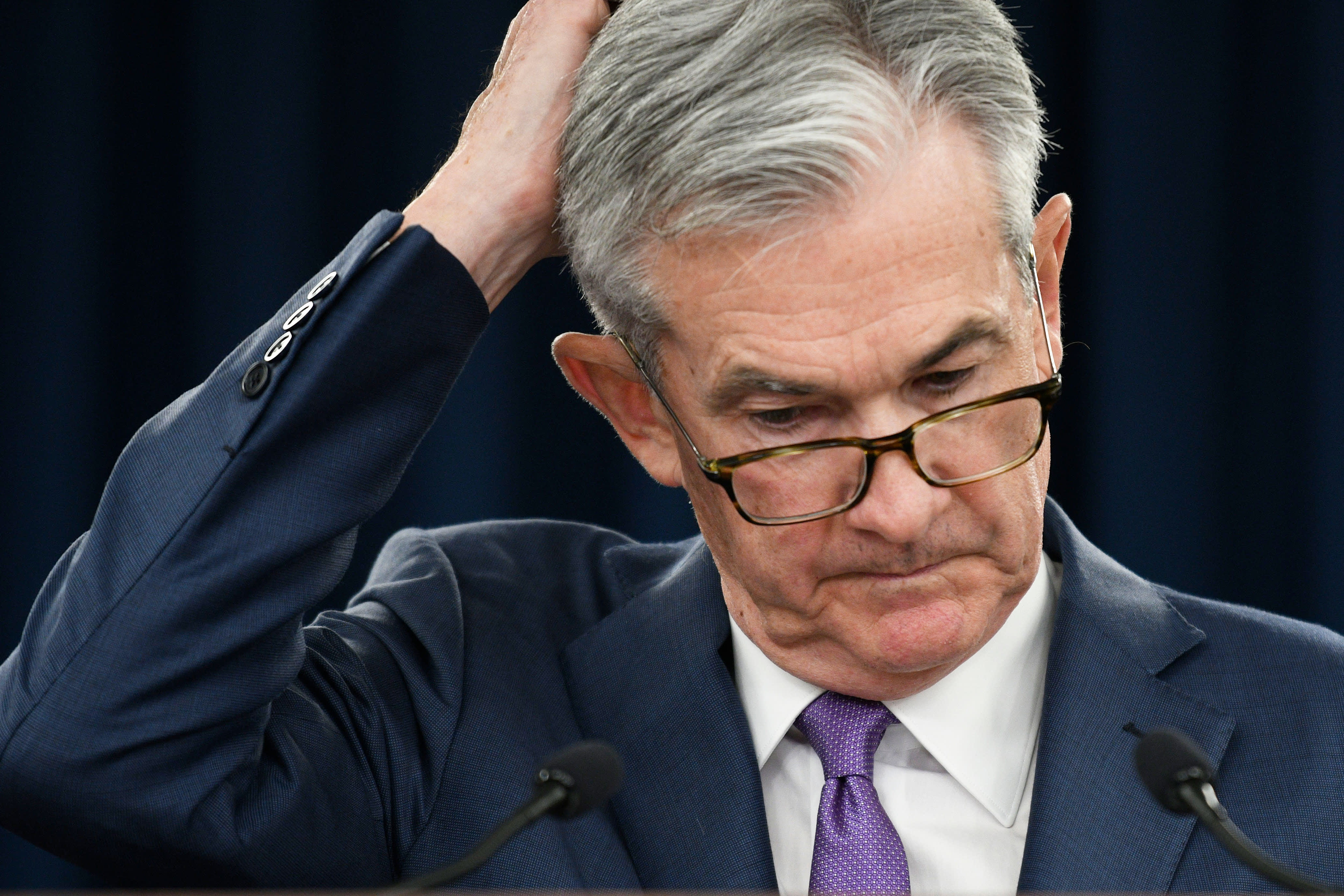
A red-flashing recession indicator in the bond market only adds to the pressure the Federal Reserve will face when it meets next month to deliver what markets anticipate will be another rate cut.
The spread between yields on the two- and 10-year Treasurys flipped Wednesday morning as the shorter-duration debt rose above the level of the benchmark rate. That's a classic recession indicator, predicting the past seven periods of negative U.S. growth.
The Fed already had been expected to cut its own funds rate by a quarter percentage point. But with economic signals getting increasingly negative, questions are bound to arise over whether the central bank will act even more aggressively.
A 25 basis point move "is still our base case," said Bill Merz, head of fixed income research at U.S. Bank Wealth Management. "But the odds of a more aggressive cut are increasing the longer we are in this period of extreme volatility, uncertainty, negative sentiment and inverted curves."
Fears that a global slowdown could eventually send the U.S. into recession have fueled market turbulence, with major averages all dropping more than 2% Wednesday amid the bond market tumult. The inversion actually had reversed heading into afternoon trading, but it was still enough to trigger fears on Wall Street following a raft of negative economic data out of Europe.
Signal is still a 'yellow flag'
Despite the jolt to markets, the Fed for now is still expected to take a more gradual approach to rate cuts.
Market pricing Wednesday pointed to just a 19% chance of a 50 basis point cut at the September Federal Open Market Committee meeting, according to the CME. Traders are anticipating another reduction in October followed by an additional move late this year or early in 2020.
The yield curve inversion was not being viewed as an automatic recession indicator, despite its strong predictive power in the past. Market experts view this inversion as at least partially fueled by some elements that have not been present in previous cases.
"At a minimum, this is a yellow flag," said Jason Draho, head of Americas asset allocation at UBS Global Wealth Management. "There are aspects of what's going on that gives us a little more pause about how negative a signal this is, mostly due to technical factors."
One of those factors, which Fed officials have cited at various times when discussing the flatness of the yield curve, is term premia.
That's the compensation investors demand for holding assets like bonds. The term premium for the 10-year note has fallen to minus 1.22, according to a New York Fed estimate that is the lowest on record. In other words, investors are demanding a very low premium, putting further downward pressure on yields.
"I think they would want to get the curve not to be inverted," Draho said. "If things get worse over the next few weeks in terms of economic data, in terms of trade tensions, it's possible they could go 50 basis points in an effort to try to get ahead of it. Right now, I think they gradually move in that direction."
To be sure, markets are far from sanguine about the inversion and what it will mean to a Fed divided between those who favor a more cautious approach that leaves policymakers with more ammunition in case of a steeper downturn against those who want to get out in front of potential problems ahead.
Market voices have been clamoring for lower rates, just nine months after the most recent hike as concerns mount over where things are heading.
David Rosenberg, the senior economist and strategist at Gluskin Sheff, warned clients in a note Wednesday against "folks [who] will continue to dream up ways to tell you to dismiss the message from the flat shape of the yield curve when instead it is them that you should dismiss."
Should that message persists, it's likely to get the Fed's attention.
"The yield curve has been making it abundantly clear that short-term rates are too high," U.S. Bank's Merz said. "We're seeing a lot of uncertainty and negative sentiment in the market. That, combined with the signal the curve has been sending for some time, could certainly influence the Fed to be more aggressive in their approach."
https://www.cnbc.com/2019/08/14/fed-and-interest-rates-recession-signal-could-add-to-pressure-to-cut.html
2019-08-14 18:10:06Z
52780352289861
Bagikan Berita Ini














0 Response to "Recession signal could put more pressure on the Fed to keep cutting rates - CNBC"
Post a Comment